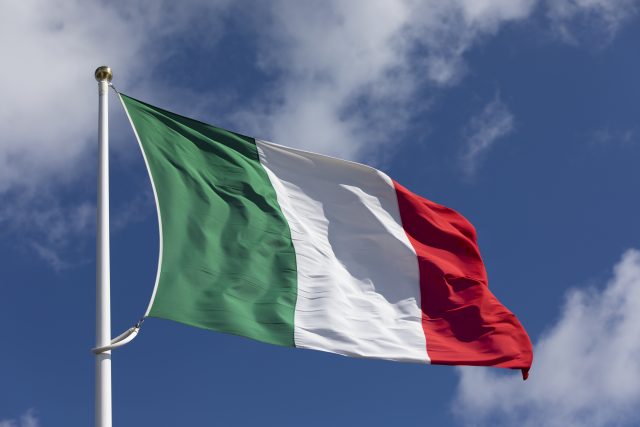This website uses cookies so that we can provide you with the best user experience possible. Cookie information is stored in your browser and performs functions such as recognising you when you return to our website and helping our team to understand which sections of the website you find most interesting and useful.
Real Italian Wine and Food highlights lesser-known regions
This year’s Real Italian Wine and Food fair in London showcased a range of food and drink products from regions off the beaten track.

While there were representatives from across the country in Lindley Hall last week, it was the Mezzogiorno, or south of Italy, that was especially well-represented, with a number of food and drink producers from Sicily, Calabria and Campania in particular.
Speaking to db, a spokesperson for Calabrese producer Cantine Caccamo said of the fair: “We are a really small company and we are looking for distribution. To be here is to put one foot in a different market – we would like to find a market that is according with our quality.”
“Calabria doesn’t come to mind for wines, but it should: the region is perfect for wine production.”
Indeed, Cantine Caccamo has utilised the region’s indigenous varieties, from the Gaglioppo in its Gorria Rosato to the Calabrese Nero in its Caparbio Rosso, to great effect.
On the topic of more obscure grape varieties that should be on one’s radar, Maturano is one that is usually relegated to blends. However, I Ciacca, in Picinisco, Lazio, has pioneered the use of Maturano in single varietal wines. The result, as can be tasted in I Ciacca’s Nostalgia, is a wine with an oily texture and flint aroma that, according to company director, a Scottish-Italian, Luigi Tana, could work with anything from fish dishes to liver and onions.
Speaking to db about the significance of using this often overlooked variety, Tana said: “Our indigenous grape, Maturano IGT was almost lost and was brought back by I Ciacca in 2012. Every producer had something of a fascinating story behind them. Being a Producer of Organic wines with a Natural and sustainable approach, makes for a true conversation on what these practices actually entail and still being able to produce a beautiful and approachable product – Its these sort of events that embody and allow these philosophies and principals to be verbalised and understood in a fun and interactive manner. Fingers crossed, more events like these pop up for the Italian Community as well as the British Italian Community, whom I enjoyed meeting quite a few of at the fair. And being Scottish Italian myself, was a real treat to mix the culture whilst tasting our heritage and produce together.”
Tana also told db of the importance of these trade shows: “…in our experience, exhibitors in a larger sized event tend to see the same faces and neighbours year in year out. This event was for us, new, innovative and really pushed the little hidden gems such as I Ciacca forward to be found, within the right environment allowing the story to be told at a nice pace. We were very excited for the I Ciacca story, and organic wines and produce: Extra Virgin Olive Oil and our MilleFiore honey to be presented at such a brilliant event. I Ciacca is small, with a huge story that in recent press has gained lots of traction. The fair also allowed me to introduce our award winning boutique hotel, Sotto Le Stelle, Picinisco, to some excited future guests.”
This sentiment was also echoed by Edoardo Di Rosa, founder and director of recently-established food and wine importer Dionysus Culture Food, who was exhibiting products from Tuscany.
Sharing a number of comestible and drinkable products, ranging from capocollo to a Saragiolino IGA (an 11% ABV ‘Italian Grape Ale’, a beer brewed with grape must), Di Rosa suggested that complementing food and drink is essential to elevating one’s enjoyment: “Pairings are important. Sometimes you eat and drink because you need calories, but sometimes you want to pay more attention to it.”
One of the producers Di Rosa imports wines from he discovered “by complete accident”, and is arguably the antithesis of the other producers pioneering hyper-localised varieties. Val di Chiana’s Tenuta Licinia produced just 15,000 bottles of its 2016 Toscana IGT, a Petit Verdot-led blend of French varieties, including Cabernet Franc and Merlot.
Tuscany is well-established as a wine region in the minds of UK consumers, but Di Rosa noted that Licinia is nonetheless “a very rare thing to find”.
The quality of the wines presented, made with either international or indigenous grapes, and the excellent ingredients on offer to pair with them, is a testament to Italy’s capacity to continue to surprise, and the passion of the producers for their products.

